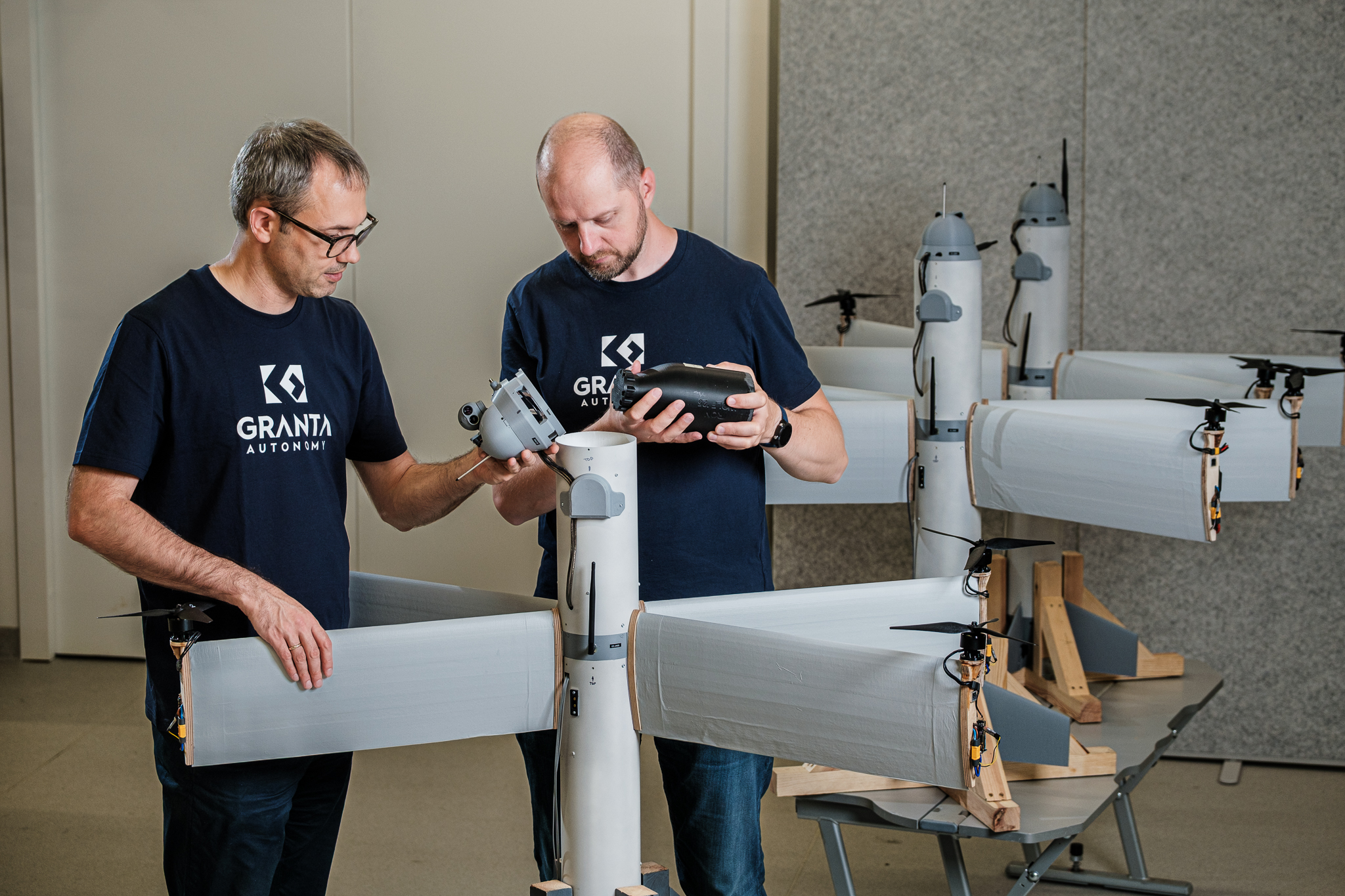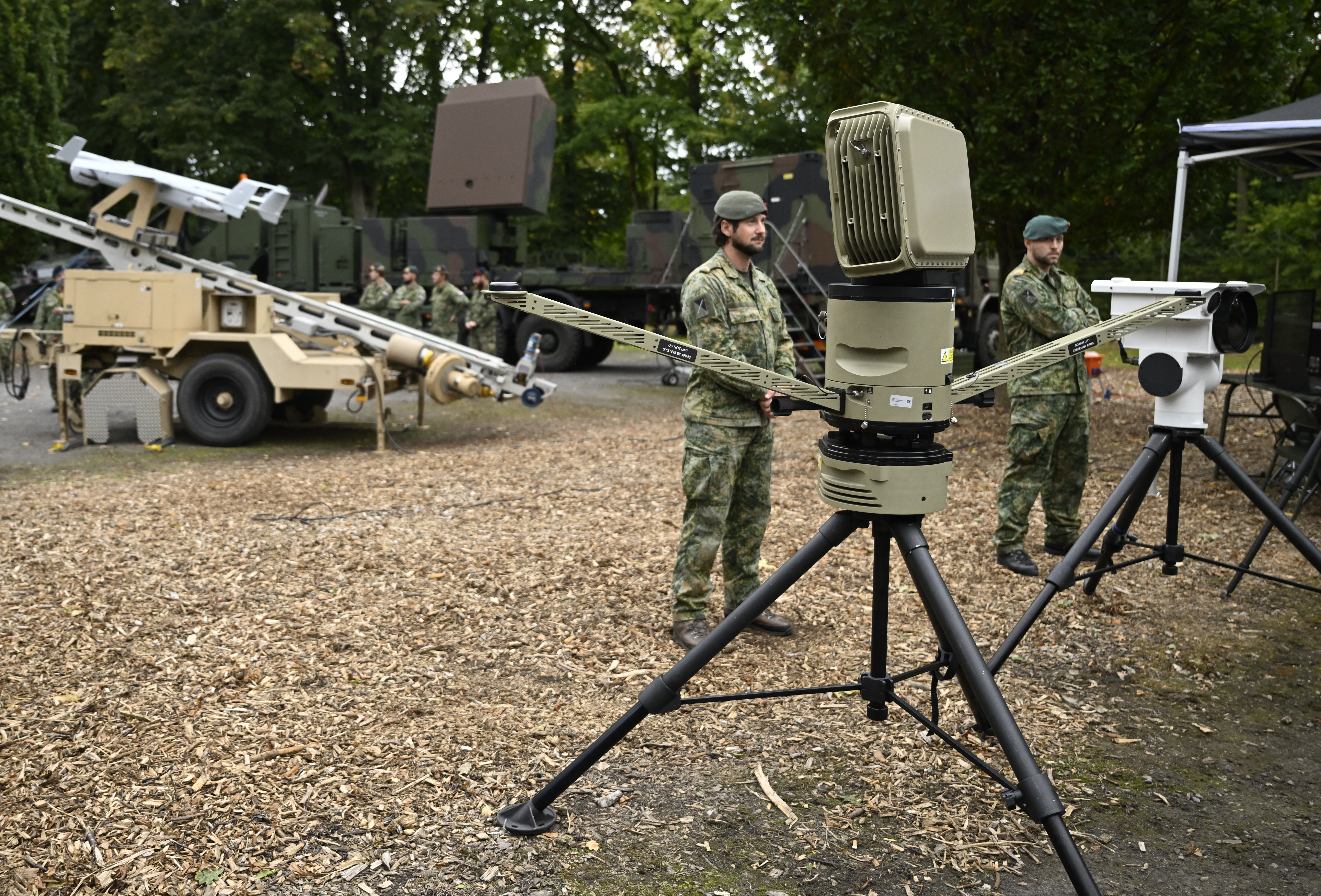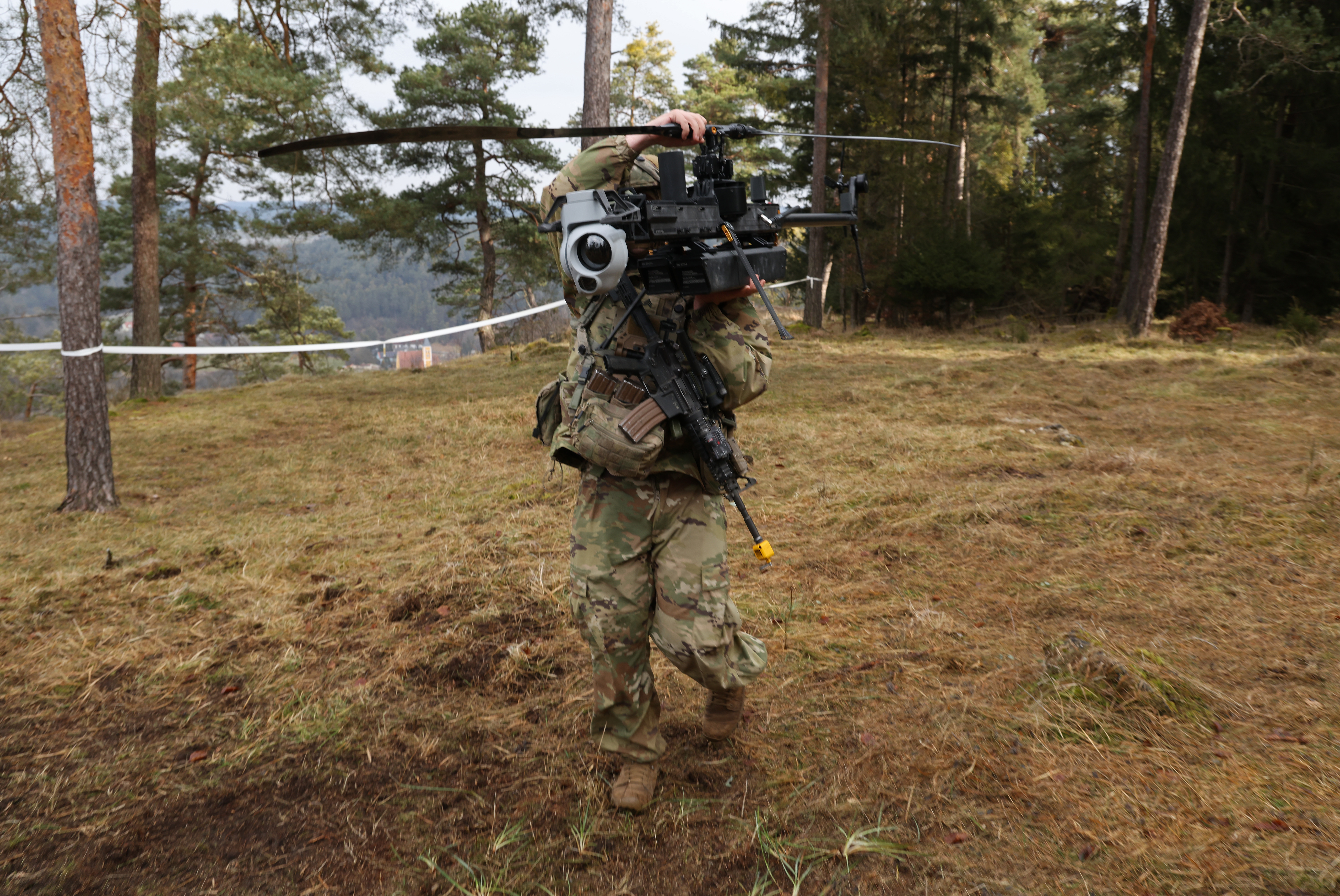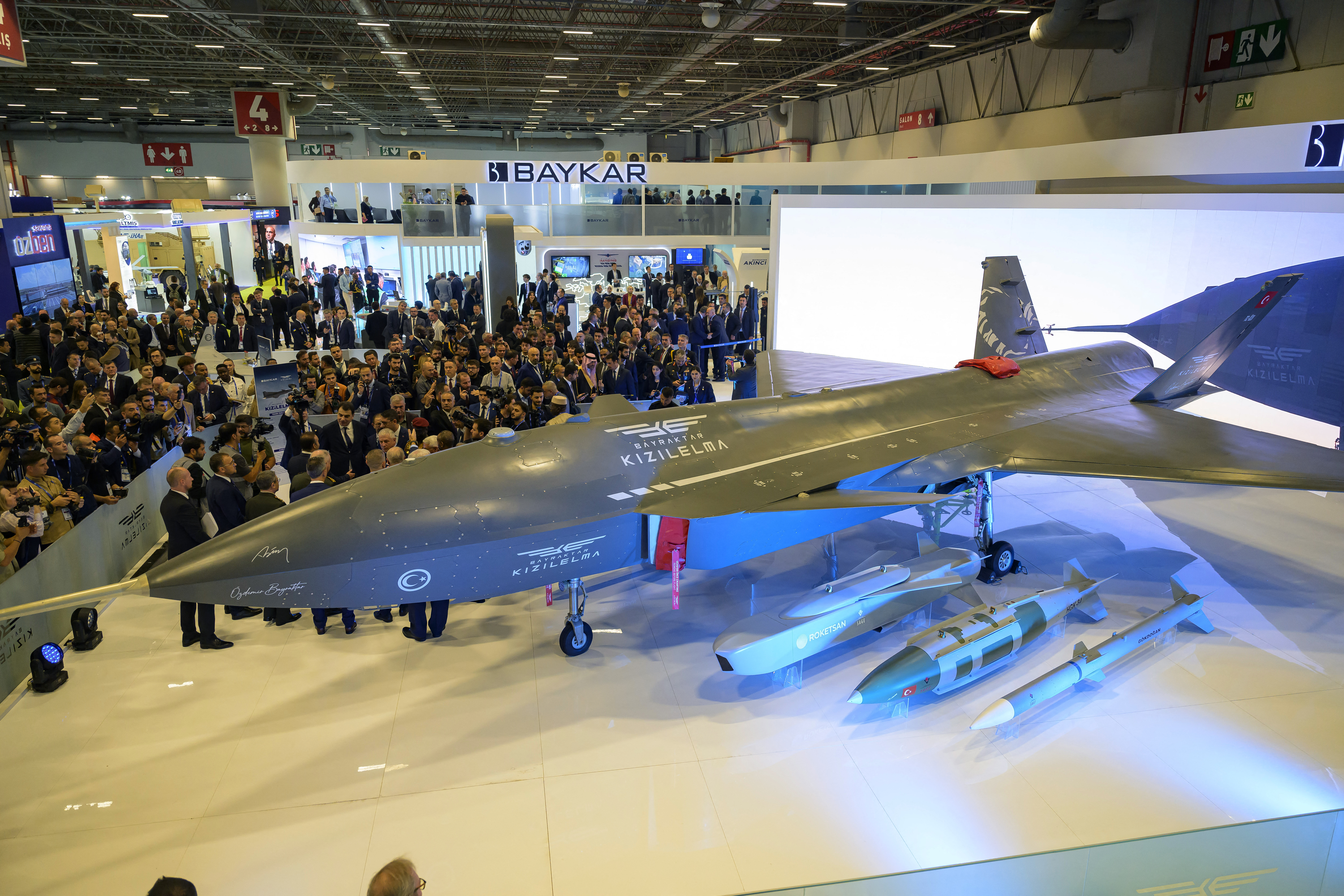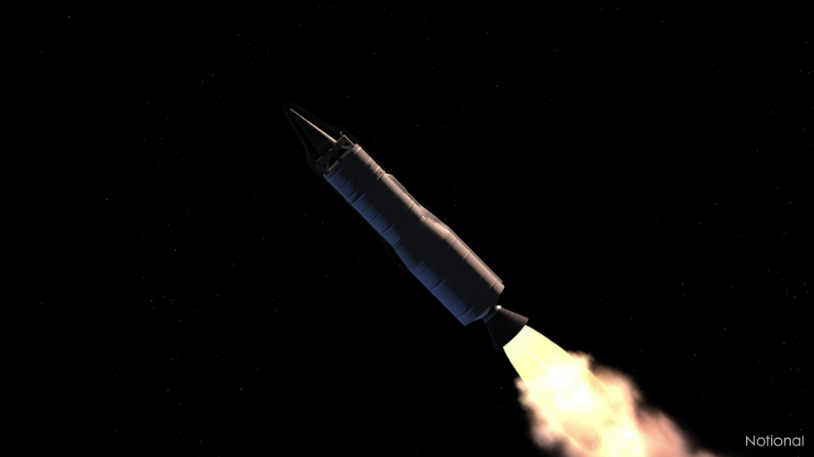
The Sentinel intercontinental ballistic missile’s second stage rocket performed largely as predicted by digital models in a recent vacuum chamber test, the Air Force and Northrop Grumman said, laying the groundwork for further testing that will allow the company to finalize the stage’s design in the coming months.
“We’re proving that our models are accurate, our development timeline is achievable, and the system will be ready to deliver when called upon,” Brig. Gen. William S. Rogers, program executive officer for intercontinental ballistic missiles, said in a release. The test demonstrates the “disciplined digital engineering approach and continued momentum” behind the program, he added.
A Northrop spokesperson said the Sentinel team fulfilled all their test objectives during the event, which demonstrates “the company’s ability to successfully build to design requirements using a digital environment.”
The digital model-based systems engineering approach “allows engineers to simulate system behavior, improve accuracy in performance predictions and reduce reliance on costly hardware prototypes,” the Air Force said. The digital environment “was also applied to the facilities and tools to manufacture the propulsion system,” the company said.
The July 20 chamber test at the Arnold Engineering Development Complex in Tennessee simulated the environment the rocket will encounter at extremely high altitudes. Officials gathered data on thrust, the burn profile, and the rocket’s thrust vectoring system.
It’s the second time the Sentinel team has tested the second stage—the first took place in January 2024.
Though everything seemed to go as expected in the latest second stage test, “all the test data that comes out will inform any refinements that need to be made, even with a nominal performance,” said the Northrop spokesperson. “Sometimes, there are things you want to change,” he said.
Overall, the results “very closely aligned with what we expected … and the team is very pleased with the results,” he said. Nothing was observed that indicated a problem with the design or manufacturing process, he added.
The Air Force Nuclear Weapons Center said the “full-scale qualification test” marked a “critical milestone” for the LGM-35A Sentinel, which is meant to replace the 50-year-old Minuteman III. The test is one of many planned to burn down technical risk on the project. More second-stage tests will come in the next few months—the next will also be in the vacuum chamber—but the timetable has not yet been determined. Those tests will “evaluate additional motor components under varied environmental conditions,” the Air Force said.
The Sentinel missile will have three booster stages. The first stage has also been tested twice, the first time in March 2023 and the second in March 2025, both at Northrop’s Promontory, Utah, solid rocket motor facility. The Air Force and Northrop said the latter event also verified SRM performance and close alignment with digital models, paving the way for further qualification testing. An integrated test with all three stages could take place as early as 2027-2028.
This latest test also marked the “second successful static firing of a fully digitally designed” large SRM, Northrop said. The first was the company’s Common 50 High-Performance upper stage motor (C50HP) “that can be adapted to support final stages of propulsion in the region outside of Earth’s atmosphere.”
The Sentinel program is in the midst of a restructure following the January 2024 announcement of a Nunn-McCurdy breach on the program—a significant cost and schedule overrun. However, Air Force and Pentagon officials have said the overrun has to do mainly with the massive civil engineering effort to replace or refurbish the Minuteman control capsules, silos, and other launch structures, and not the development of the missile itself.
Gen. Thomas Bussiere, head of Air Force Global Strike Command, said in a recent interview with Air & Space Forces Magazine that the restructure “will attempt to buy back some of the delay” in the program due to the overages in the civil engineering and communications effort, estimates of which had been as high as three years. He also said that “changes in the threat landscape”—including the upcoming end of the Strategic Arms Reduction Treaty—may require the Air Force to increase the number of warheads carried by the Minuteman and Sentinel. The Air Force “has the capability and the capacity” to do that, if required, he said.
Air Force Secretary Troy E. Meink told the House Armed Services Committee on June 5 that Sentinel is one of his top three priorities, and “we’re doing everything we can to get it back on track.”
The program calls for deploying 450 missiles that are expected to serve until 2075. The program also calls for 24 launch centers, and more than 100 pieces of specialized equipment for transporting, handling and servicing the Sentinel, as well as secondary command and control systems. The company says it is using more than 100 suppliers on the program.
The post Sentinel’s Second Stage Test Results Show Digital Models Are Accurate: Officials appeared first on Air & Space Forces Magazine.

ICBM Modernization and Sustainment, Brig. Gen. William S. Rogers, ICBM, Northrop Grumman, Sentinel ICBM
Air & Space Forces Magazine
[crypto-donation-box type=”tabular” show-coin=”all”]

